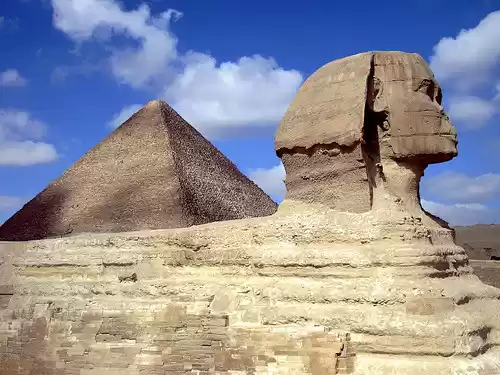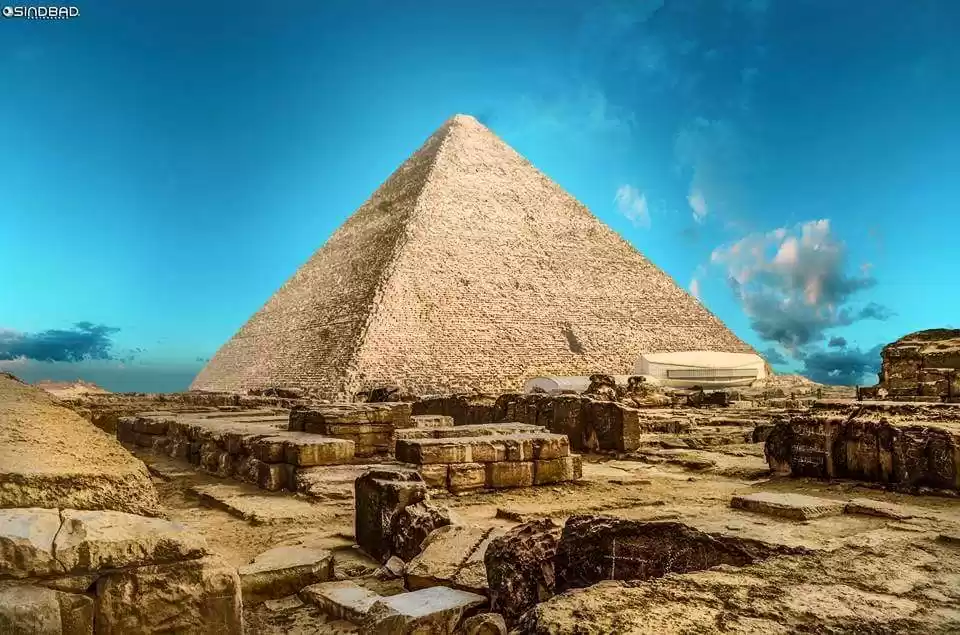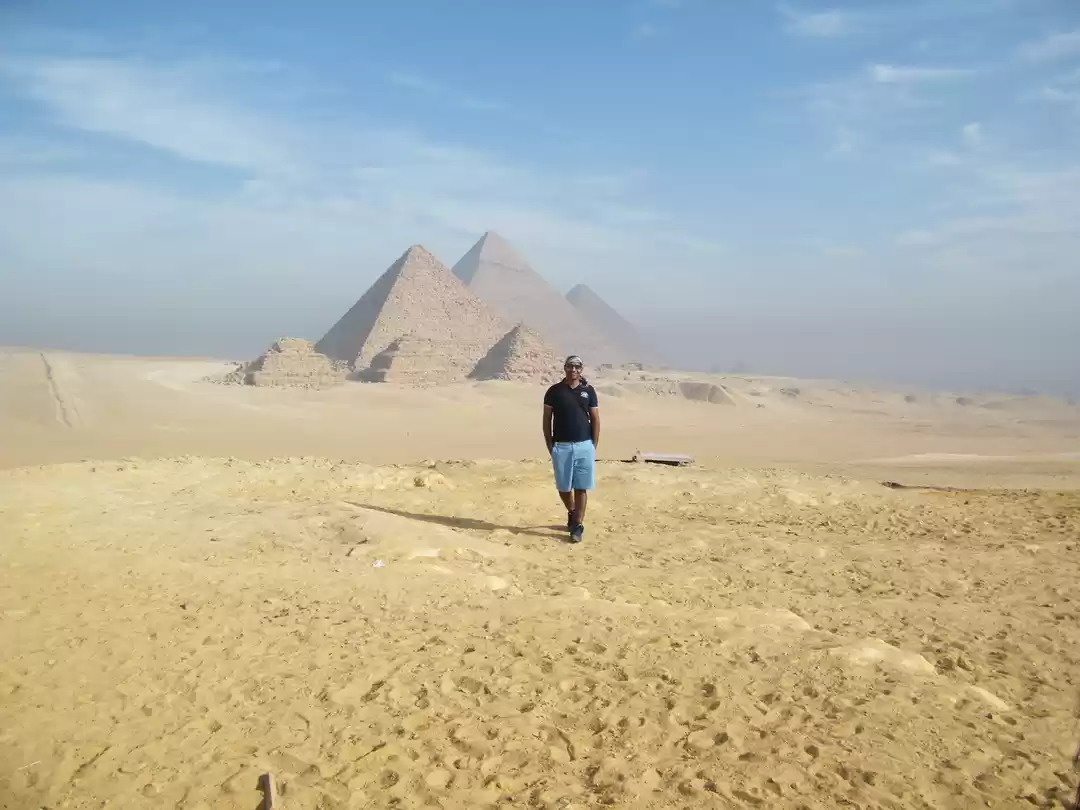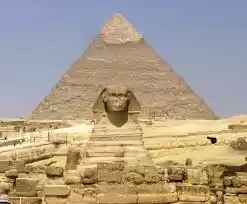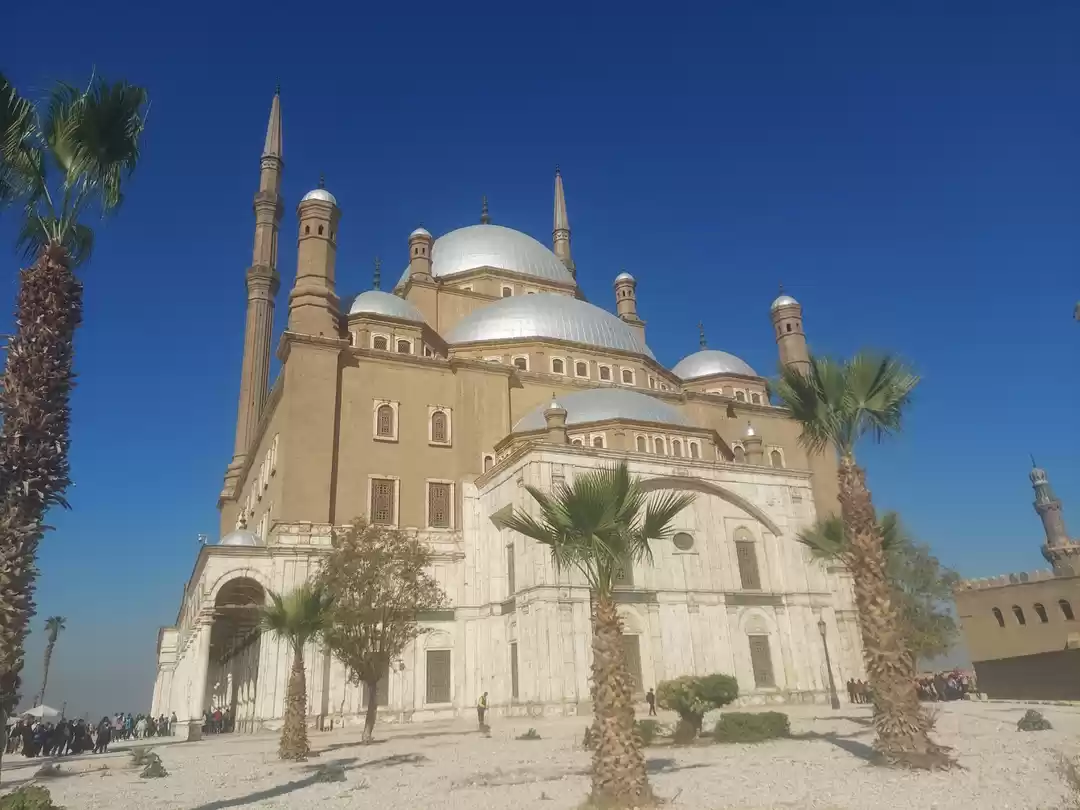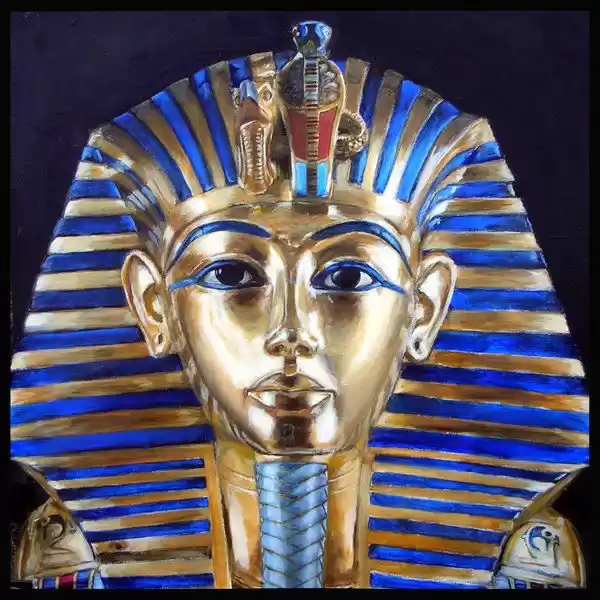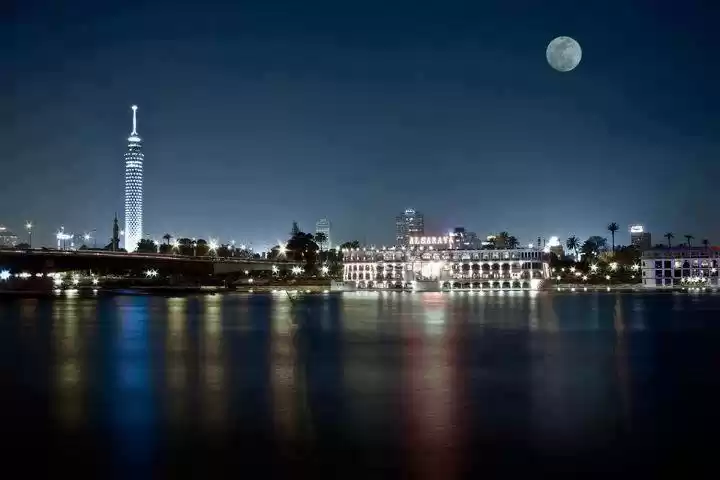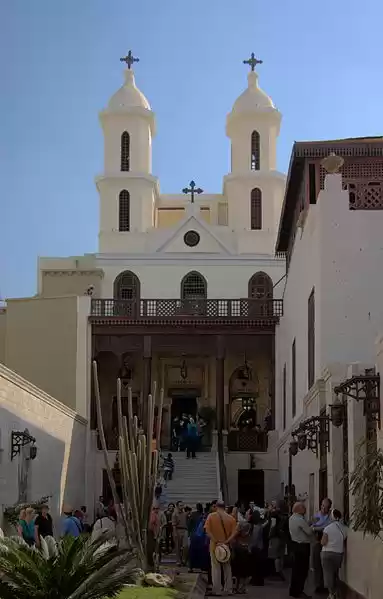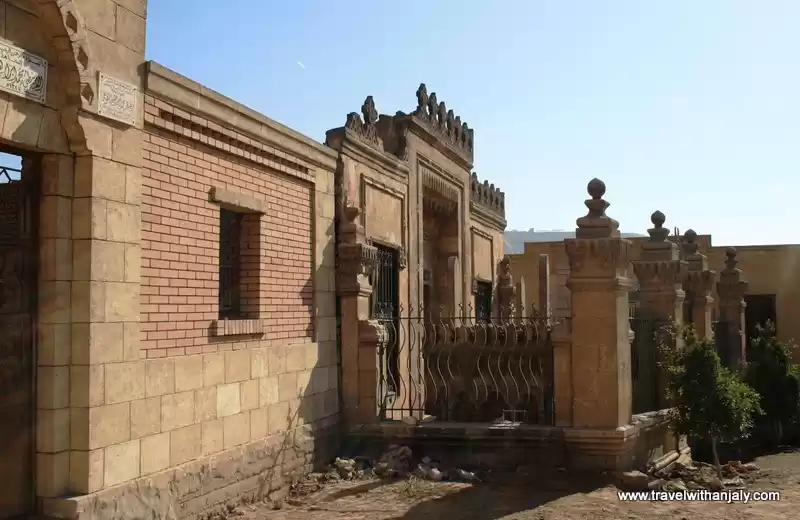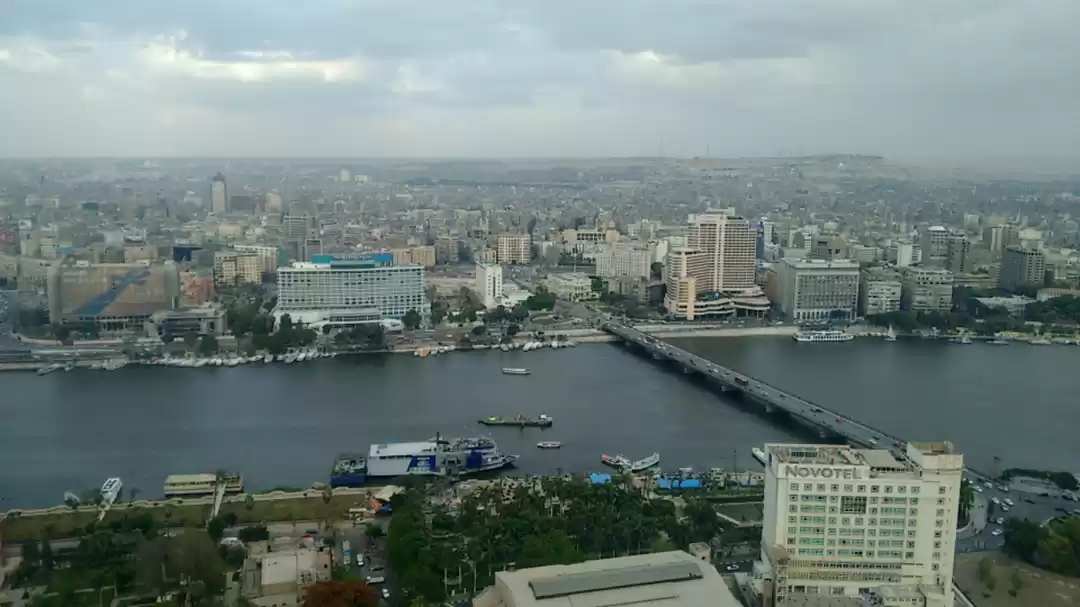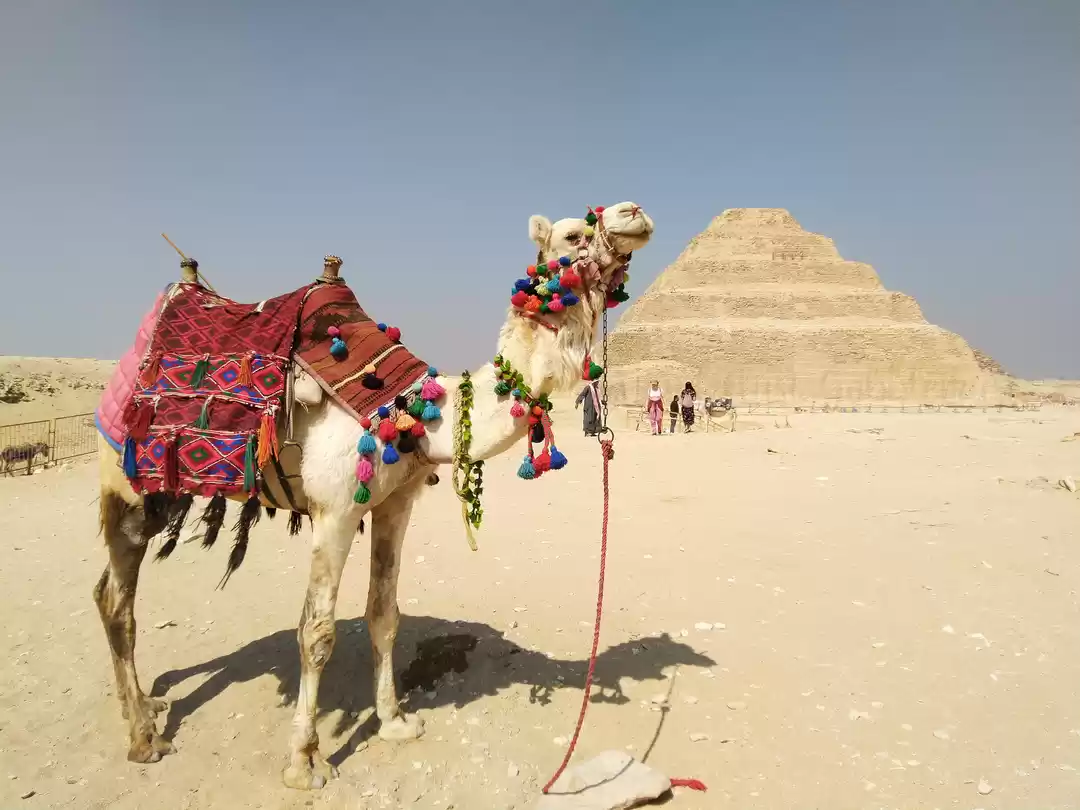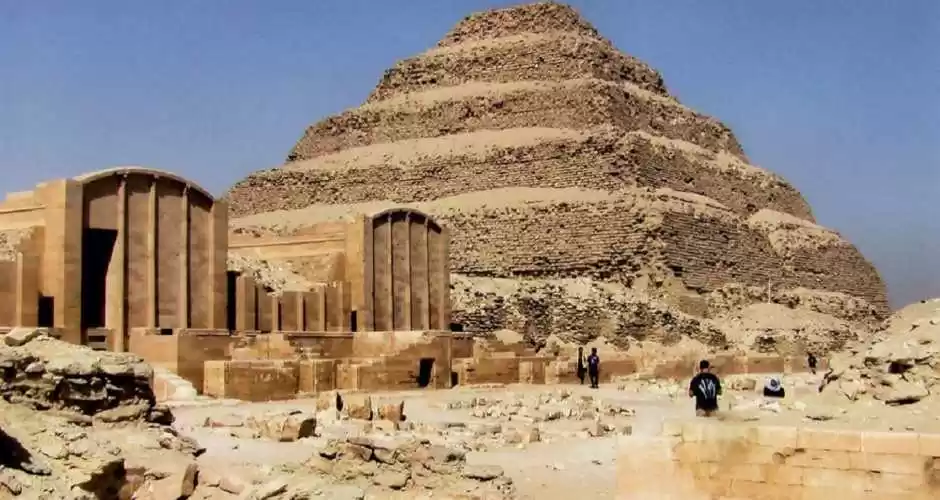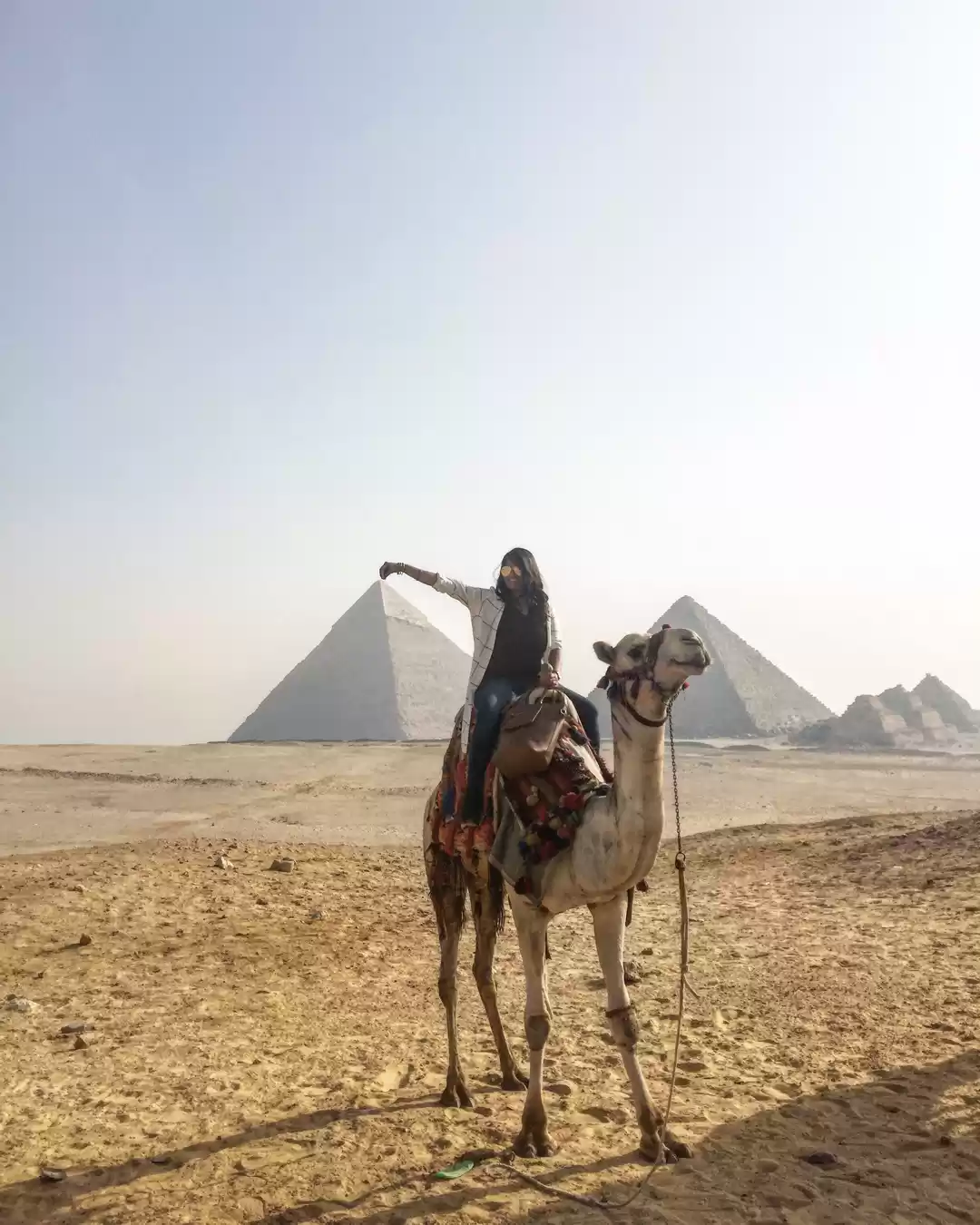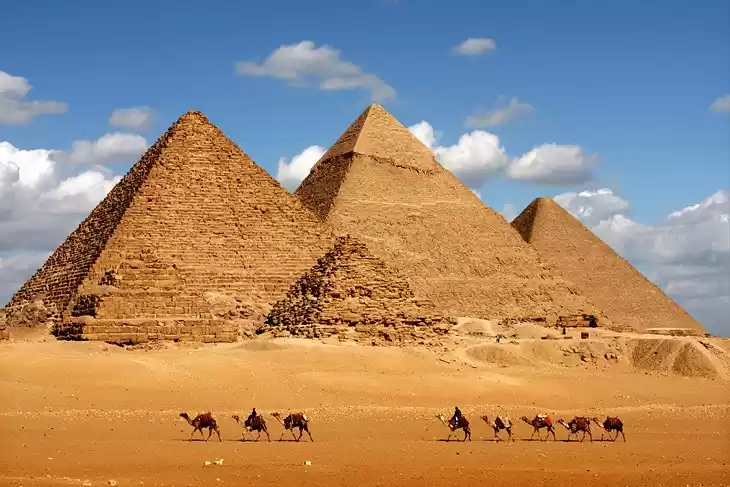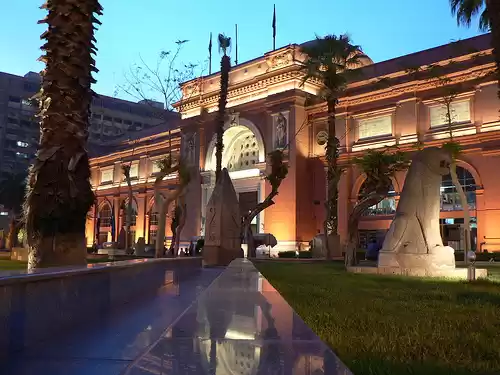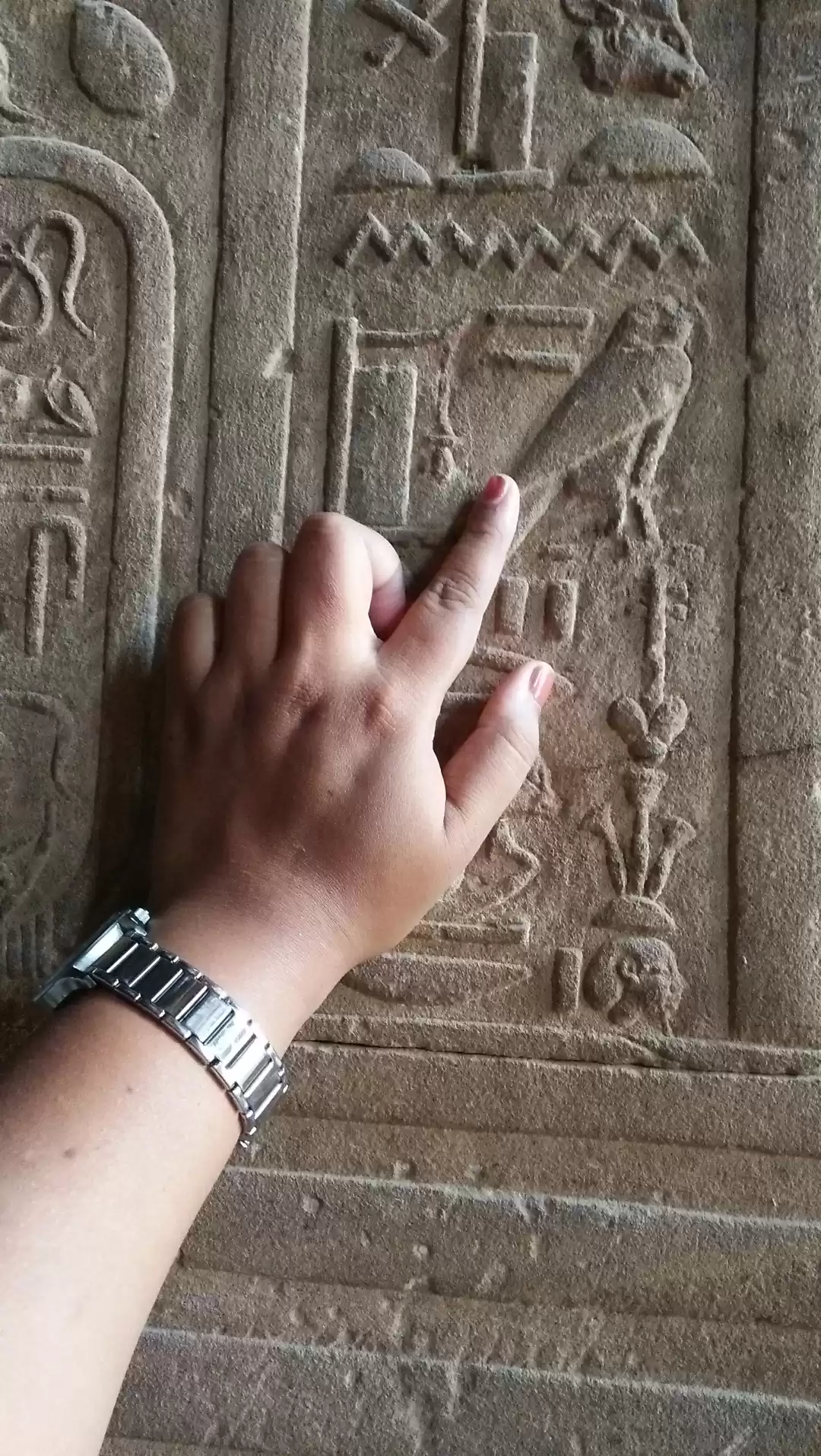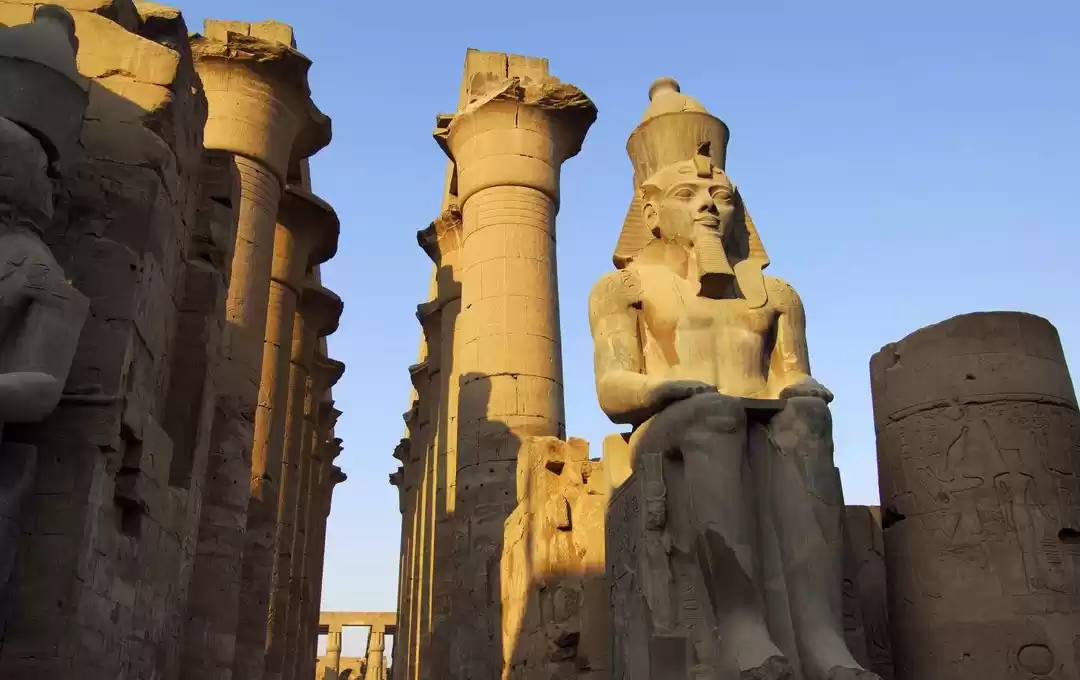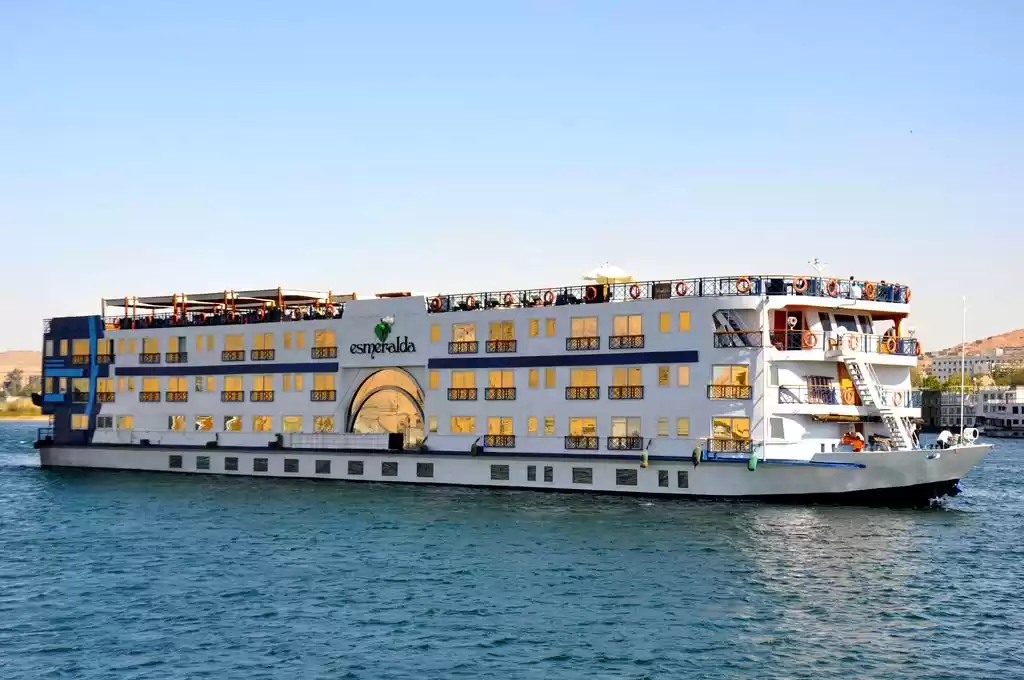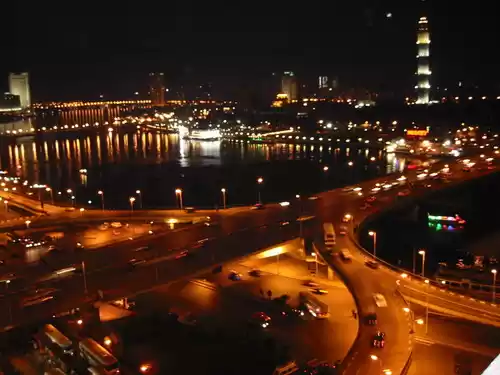Originally built in 14th century as a caravanserai, the Khan el-Khalili in Cairo was a souk where traders from diverse regions gathered to sell their goods. Since then, the market has always been an important district for cultural and economic activity.
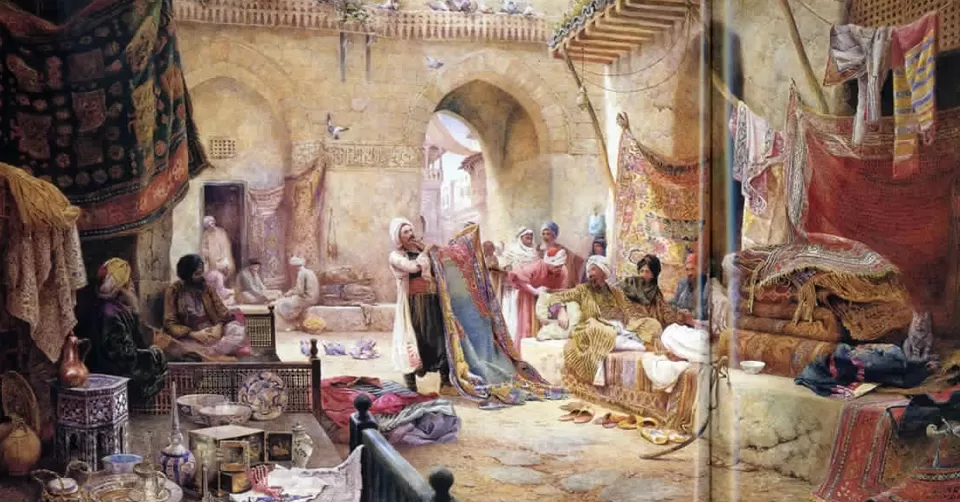
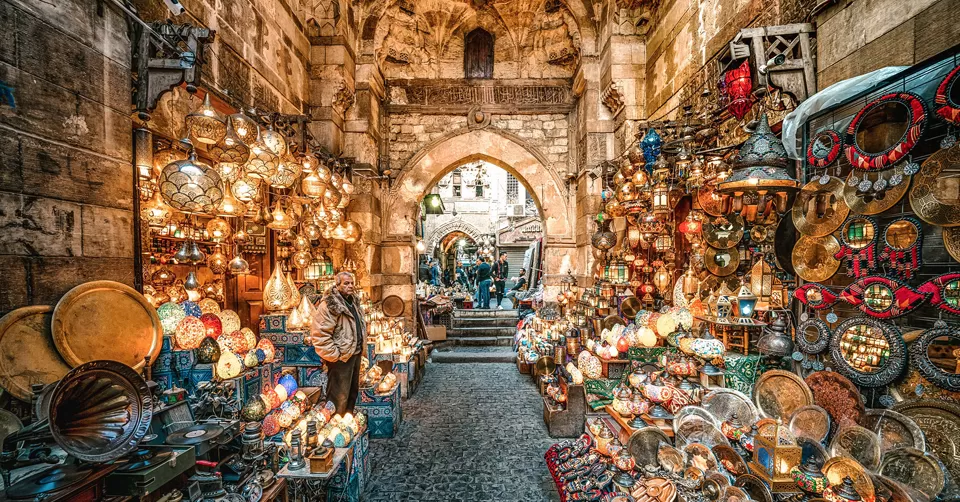
Picture this: Thin winding alleys of a maze-like district which is lit up with a multitude of golden Arabian lamps, baubles, trinkets, silk, and spices luring you from every corner, and elaborate sheesha pipes gurgling away merrily. Now and then, throaty strains of some Arabian love song rise in the air along with tunes of violin and oudh and it is no wonder, that the Khan el Khalili market looks straight out of the Arabian Nights!
Here’s your guide to the Khan El-Khalili market-
➤ How To Get There
The Khan el-Khalili Bazaar is located in the heart of Cairo's historic Islamic quarter, and there are several ways to travel there, depending on your preferences and budget.

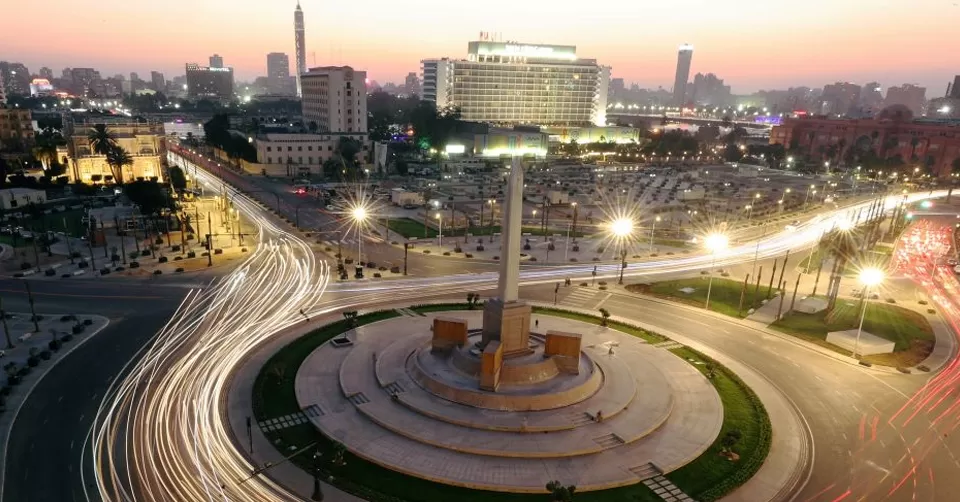
Taxi: Taxis are widely available throughout Cairo and can be hailed on the street or through ride-hailing apps like Uber or Careem. Negotiating the fare with the driver before getting in the taxi is essential. Take a taxi from Tahrir Square and reach Midan Hussein for around 5-10 Egyptian pounds. You will get dropped off in front of the Al Azhar mosque, from where you can walk through the underground passage to reach the market directly.
Public Transportation: The Cairo Metro is an affordable way to travel around the city. The closest stations are Ataba and Hussein, both on Line 1. From there, you can take a short walk to the bazaar.
Tourist Bus: Many Egypt tour companies in Cairo offer guided tours, including visiting the Khan el-Khalili Bazaar and a guide to show you around.
Walking: If you enjoy walking, you can easily walk to the bazaar from nearby neighbourhoods like Downtown Cairo or Garden City. This can be a great way to explore the city and take in the sights and sounds of Cairo along the way.
NOTE: Whatever method you choose, take the necessary safety precautions, such as avoiding walking alone at night and keeping your valuables secure.
➤ Best Time To Visit
For an authentic experience with fewer crowds - then mid-morning or mid-afternoon are good times to visit. Late afternoon or early evening is the best bet, when the bazaar takes on an entirely different feel as the sun sets and the lights come on!
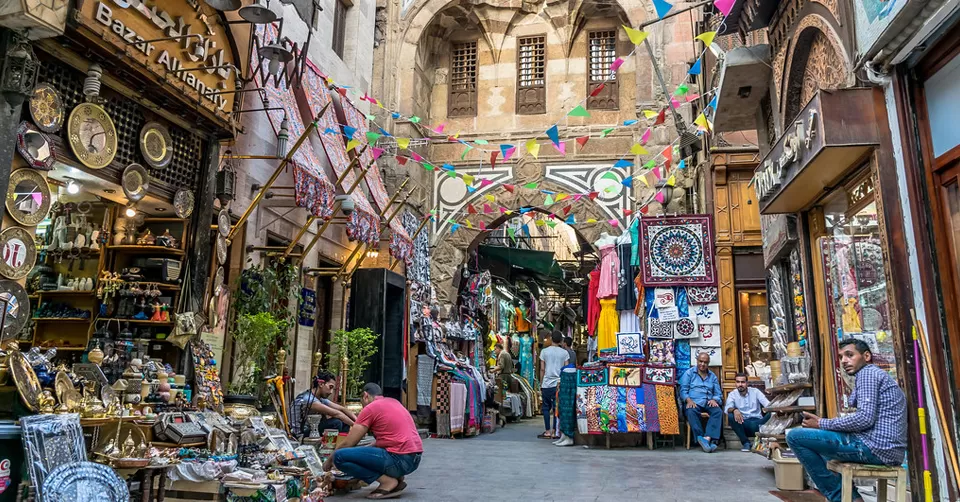

1. Ramadan experience (March-April)
It is a different experience all together while enjoying the sights and sounds at this magical place: from colourful shops selling Ramadan lanterns and souvenirs, oriental cafés serving refreshing Egyptian drinks, to the delicious smell of Ramadan sweets wafting through the air, the locals singing and their joyous laughter filling the air, and groups performing Egyptian folk dance- Indeed a feast to the senses!
2. Mawlid Al-Hussein experience (September)
You’ll be guaranteed a fresh experience if you visit the market at the same time as the Mawlid Al-Hussein, a Sufi celebration of Imam Hussein’s birth. During this time, Sufists perform litanies and take part in other traditional activities. A few steps away you’ll find Wekalet El- Ghouri where you can enjoy another type of Sufi spiritual activity, the Tannoura show. Carnivals take place in Muizz Street every now and then, too.

➤ Places To Visit Around The Market
1. Al-Azhar Mosque
Located just a short walk from the bazaar, Al-Azhar Mosque is one of Cairo's oldest and most famous mosques. It was founded in the 10th century and is renowned for its beautiful architecture and historical significance.
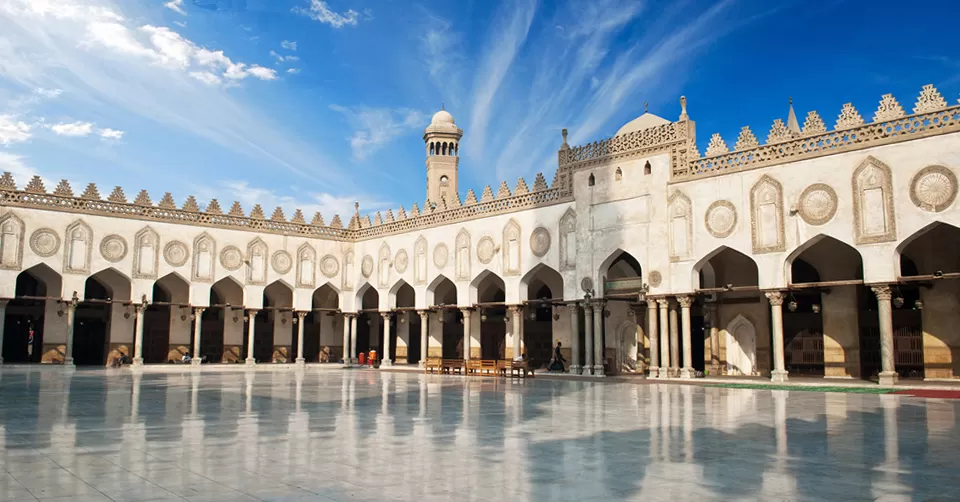
2. Ibn Tulun Mosque
Another important mosque near the bazaar is the Ibn Tulun Mosque, which dates back to the 9th century. It is one of the oldest mosques in Egypt and features a distinctive minaret and beautiful interiors.

3. Cairo Citadel
The Cairo Citadel is a medieval fortress on a hill overlooking the city. It was built in the 12th century and is home to several museums and historic sites, including the Alabaster Mosque of Muhammad Ali.
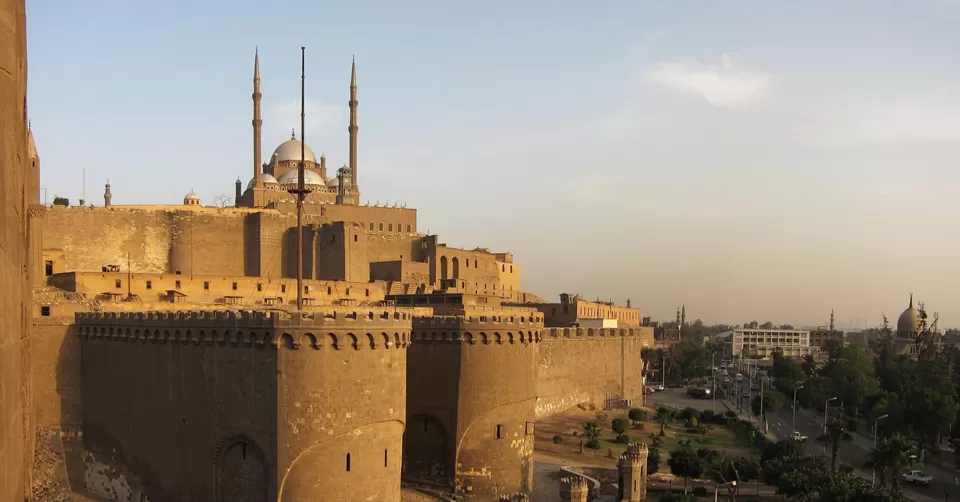

4. The Egyptian Museum
The Egyptian Museum is home to an extensive collection of ancient Egyptian artifacts, including the treasures of King Tutankhamun. It is in downtown Cairo, just a taxi ride from the bazaar.
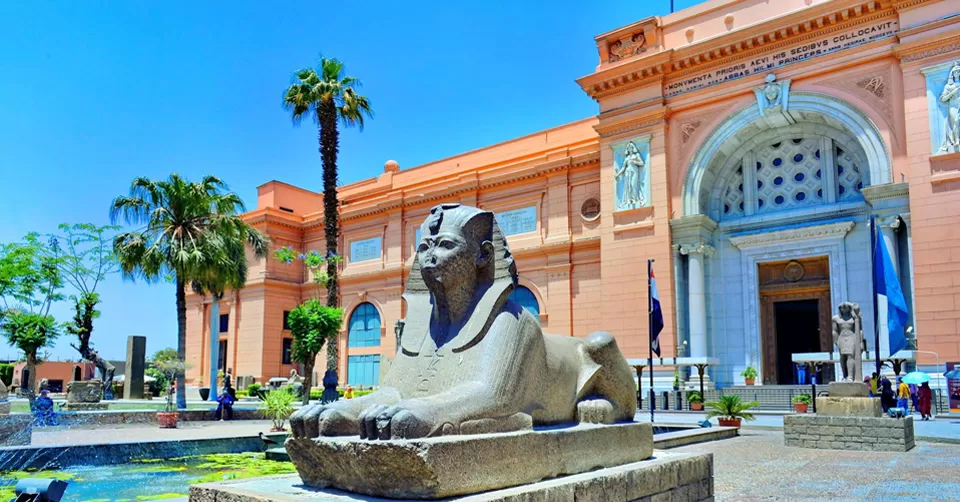
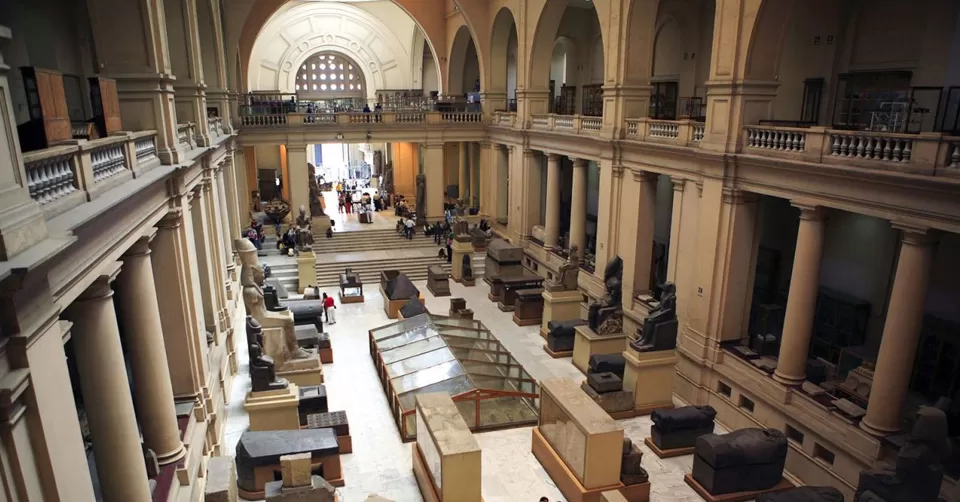
5. Al-Muizz Street
Al-Muizz Street is a pedestrian-only street that runs through the heart of Islamic Cairo. It is home to many historic sites, including mosques, madrasas, and old merchant houses.
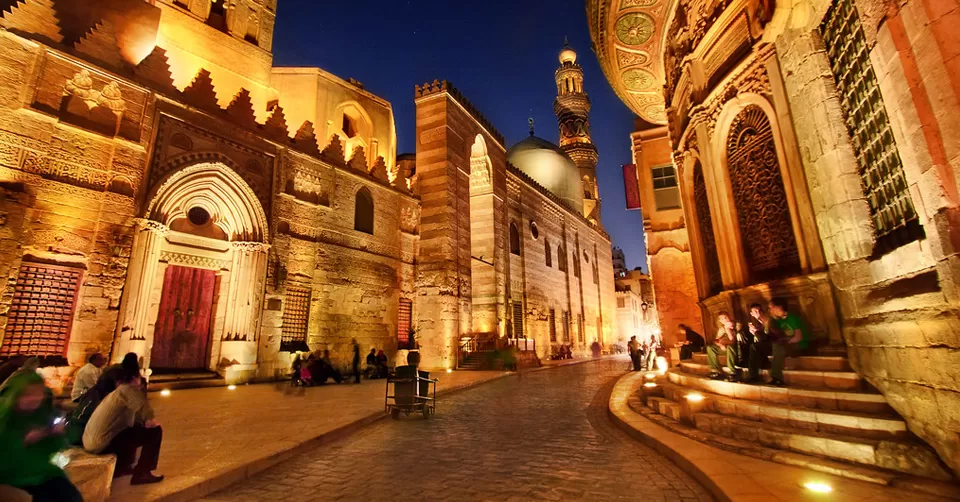
➤ Things To Buy
There are a variety of goods to purchase here – from sparkling silverware, gold artefacts and antiques, to stained-glass lamps, incense and handmade accessories. Also, the soft touch of the handmade carpets will take your breath away. There are also dedicated districts for gold, copper and spices.
1. Egyptian jewellery: You can find beautiful necklaces, earrings, and rings made with semi-precious stones like turquoise and lapis lazuli (blue stones which the Ancient Egyptians used, to create blue cosmetics).
2. Antiques & stained-glass lamps: You will come across colourful shops selling lamps of all types and sizes, together with beautiful antique items.
3. Pottery items: Many vendors sell hand-painted pottery in bright colors and interesting shapes. You can find vases, plates, bowls, mugs, and more.
4. Papyrus paintings: These colourful works of art depict scenes from Ancient Egyptian mythology or everyday life in Egypt today. They make great conversation pieces and look beautiful when framed.
5. Cotton scarves & leather bags: You can find lightweight cotton or linen fabric scarves that keep you cool during hot days in Cairo. There are also leather goods like bags and wallets.
6. Spices: You can buy spices like cumin and cardamom or pick up some traditional sweets like baklava or konafa.
➤ Places To Eat and Drink
With its abundance of street food stalls and cafes serving - it's a great place to sample some local flavours without breaking the bank!
1. Naguib Mahfouz
How to get there: 5, El Badistan Lane in Khan el Khalili
This is the most famous restaurant and cafe in the market which is being run by the Oberoi hotel group -- they have consistently good food and swankier surroundings then all other restaurants in the area. On weekends and other high traffic times there might be a wait though, and it’s pricier than other cafes in Khan El Khalili.
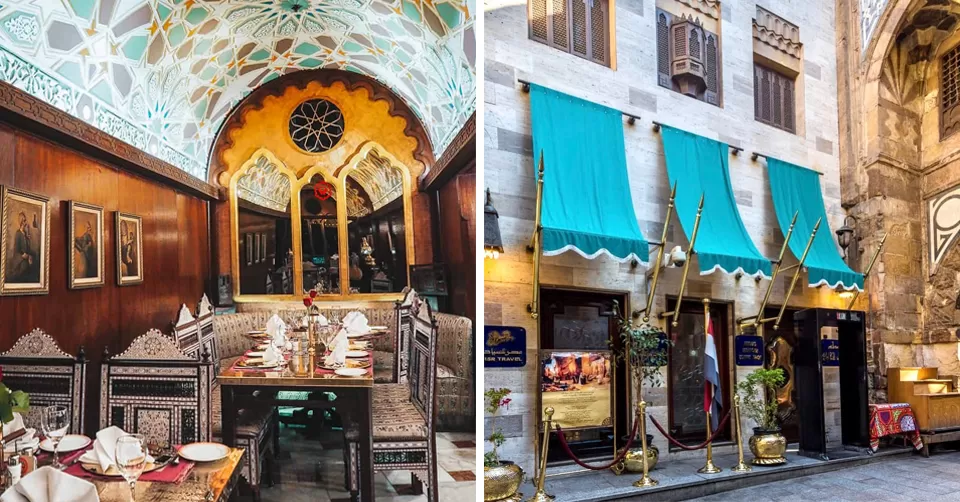
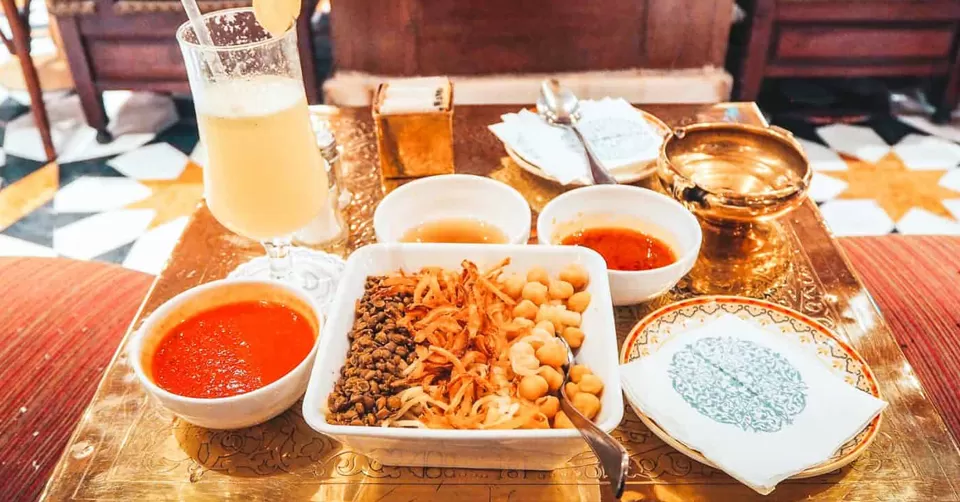
2. El Fishawy Cafe
How to get there: 2 Khan El Khalili Street - El Hussein Square
This is another extremely famous cafe, open for more than 200 years. Expect to be squeezed into any open chair they have in the alley, even if you end up sharing a table with a stranger, because this place gets crowded, fast. Stop here for a sheesha or a quick drink, and we do mean quick, because the waiters will try to hustle you out as soon as you’re finished drinking.

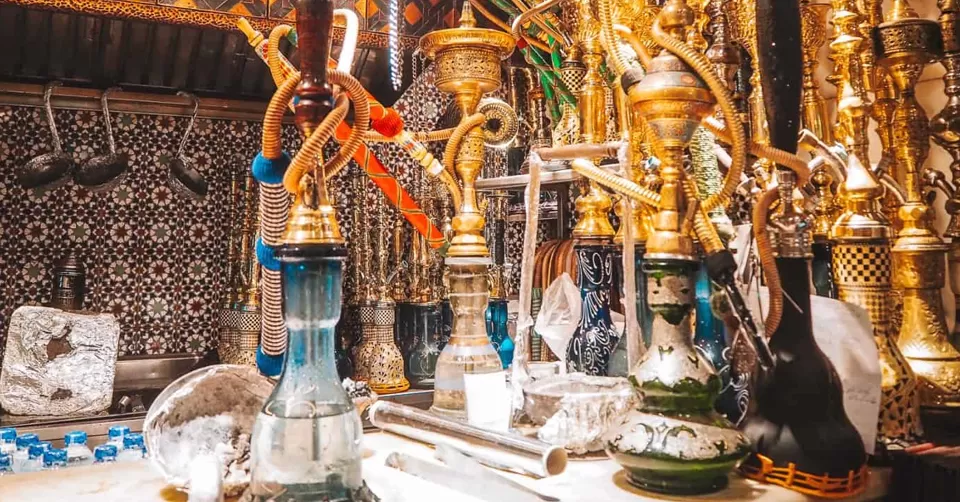
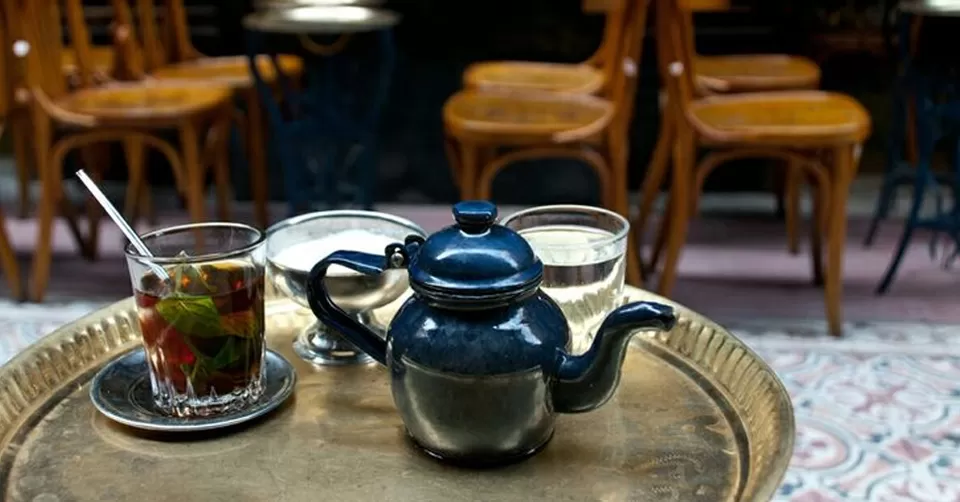
3. Traditional Coffee Houses in Midan Hussein
Right outside Al-Hussein Mosque in Khan El Khalili, you will find many outside seating restaurants serving traditional Egyptian cuisine like koshari (rice, lentils, macaroni), falafel sandwiches, shawarma wraps, and more.
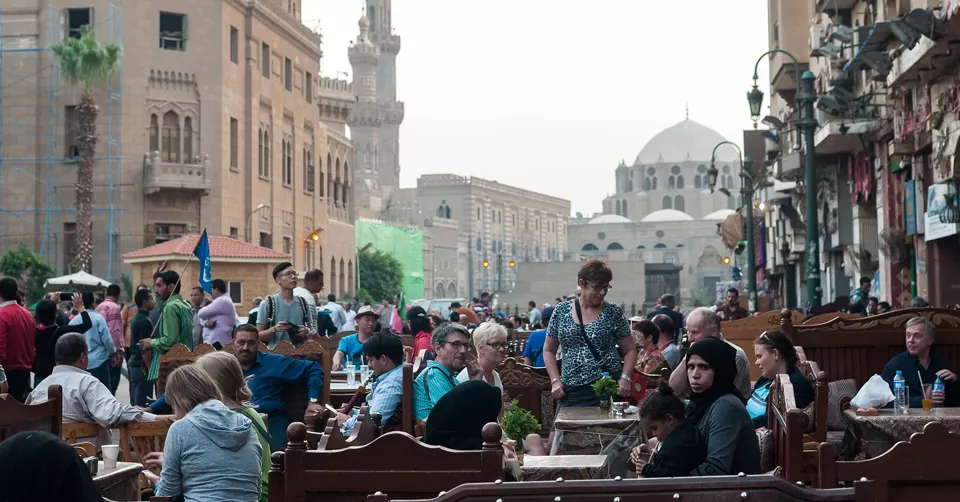
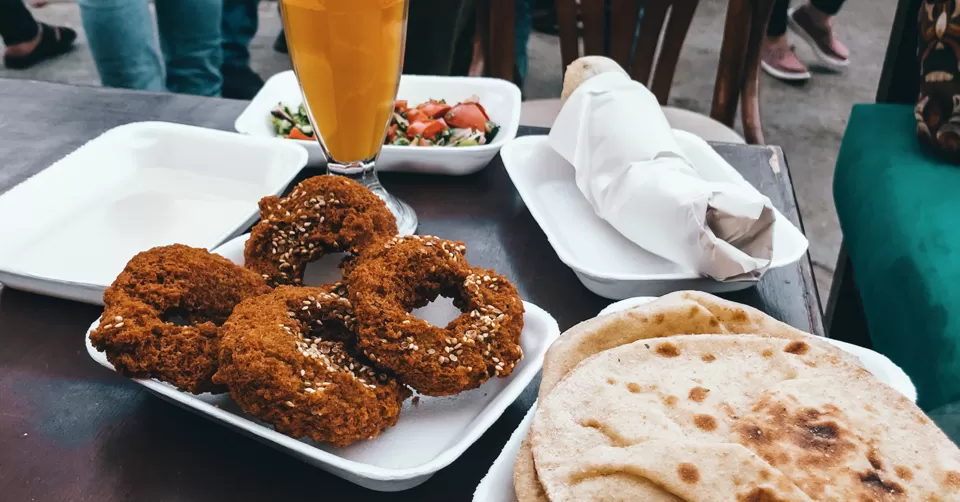
Tip for meat lovers: Try the kebab and kofta from El Dahhan, followed by rice pudding for dessert at El Malky near Al-Hussein mosque.
➤ Things to Be Kept In Mind
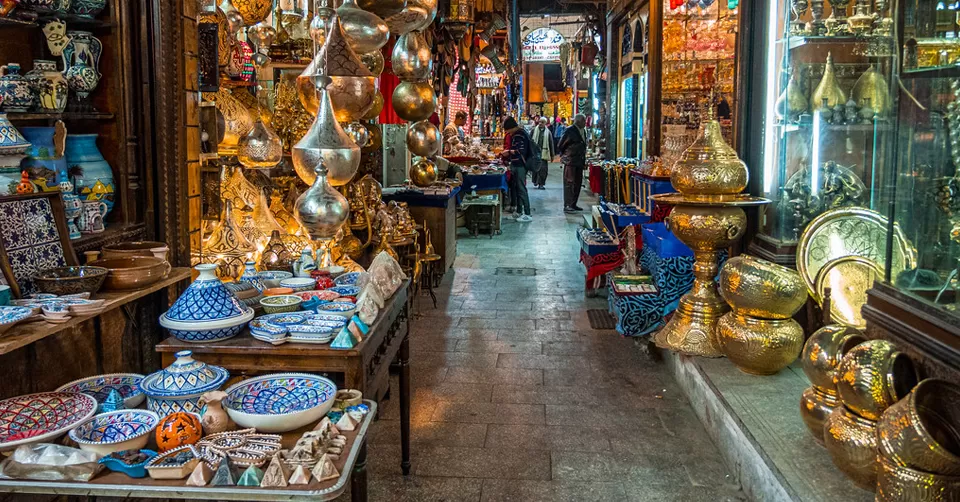
- Dress modestly. (no shorts or tank tops)
- Haggle over prices (it's expected and a common practice), but keep a friendly tone and smile.
- Learn to say 'La, shukran', meaning 'No, Thanks' (as many shopkeepers will chase you to sell their items) with a smile and respect.
- Be respectful and take permission before taking any photographs of the shops or locals.
- Watch your belongings. (pickpockets do operate here)
- Don't be afraid to explore. (you never know what treasures you may find!)
It's a great place to find unique items and experience traditional Egyptian culture!
Let us know in the comments below should you want to know anything more regarding Khan El Khalili market.
For more travel stories and information follow me on Instagram @travelstoriesbytan.
Ready to travel for free? Earn credits and redeem them on Tripoto's weekend getaways, hotel stays and vacation packages after the pandemic is over!



